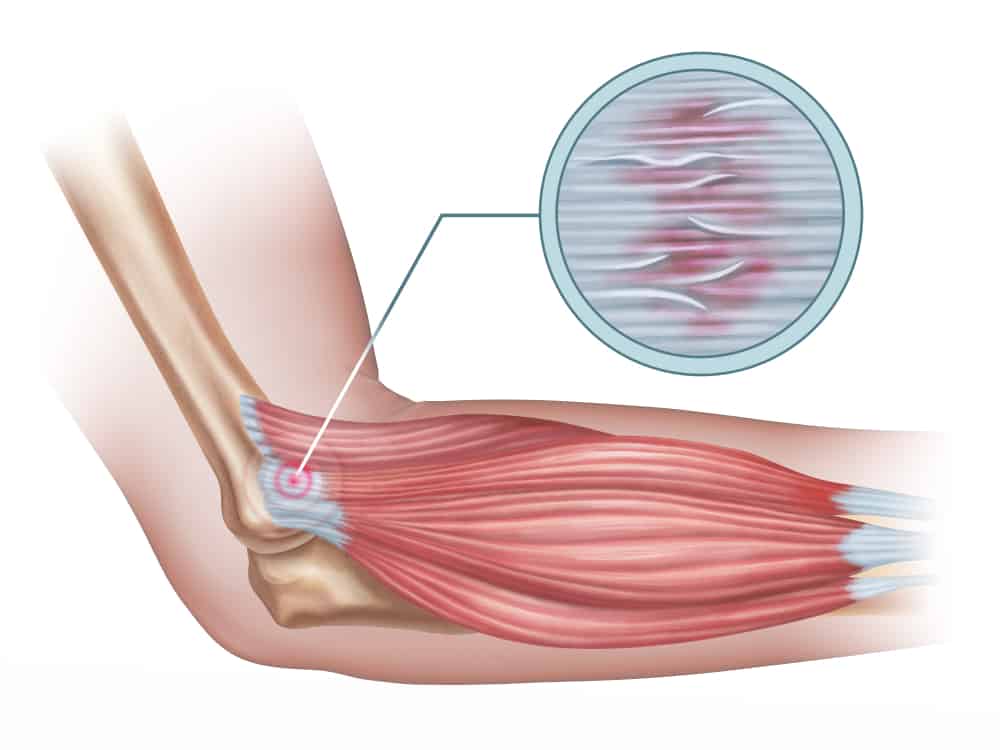Internal scar tissue, also known as adhesions, forms when the body’s response to healing is triggered by any form of physical trauma. While scars are commonly associated with external skin damage, internal scar tissue is a fibrous material which binds together damaged internal tissues, potentially impairing functionality and causing chronic pain.
Despite the commonality of internal scar tissue, it often goes overlooked due to its hidden nature. Unresolved scar tissue can lead to a range of health issues including: restricted mobility, chronic pain, circulation problems, and in severe cases, organ dysfunction.
In the modern health landscape, there is a growing emphasis on natural healing methodologies. These offer a host of benefits including reduced reliance on invasive procedures and pharmaceutical intervention. Natural healing methods can stimulate the body’s own healing mechanisms, minimizing potential side effects and promoting holistic health. An understanding of how to heal internal scar tissue naturally could potentially alleviate discomfort for many, enhancing their quality of life.
How Scar Tissue Forms

Scar tissue is the body’s response to injury, formed as part of the natural healing process. When a tissue suffers damage, the body initiates a repair mechanism. It produces a protein known as collagen to mend the affected area. This collagen-rich tissue then develops into a scar. Unlike the original tissue, scar tissue is fibrous and lacks flexibility, which can cause discomfort and impact functionality.
The Difference Between External and Internal Scar Tissue
While scar tissue is a universal response to injury, it’s important to distinguish the difference between external and internal scar tissue. External scar tissue is easily recognizable, appearing on the skin as a raised or discolored patch after a wound has healed. Its formation is a visible confirmation of the body’s healing process, and while it might cause aesthetic concern, it usually doesn’t disrupt bodily functions.
On the other hand, internal scar tissue, or adhesions, form within the body, repairing damage to muscles, ligaments, or organs. Being invisible to the naked eye, they are harder to diagnose and can cause complications if they restrict the range of motion or the normal operation of organs. Furthermore, internal scar tissue can cause chronic pain, especially if it forms around nerves. Learning how to heal internal scar tissue naturally can be a crucial step for those affected by this often overlooked health issue.
Related topic: How to Get Rid of Yeast Infection on C-Section Scar
Common Causes and Symptoms of Internal Scar Tissue
Some common causes of internal scar tissue are:
- Major surgery, especially abdominal or pelvic surgery
- Infection
- Endometriosis
- Radiation
- Certain diseases, like tuberculosis
Recognizing the symptoms of internal scar tissue is crucial for early intervention. While the signs may vary depending on the location and extent of the scar tissue, some common symptoms include:
- Chronic pain
- Restricted mobility
- Digestive issues
- Shortness of breath
The Power of Natural Healing
Our bodies are designed with an amazing capacity for self-repair. When an injury occurs, the body initiates a healing process that includes inflammation, tissue formation, and remodeling. This healing process can also lead to the formation of scar tissue, which is essentially a type of fibrous connective tissue that replaces normal tissue damaged by injury or disease. Although this is a natural and necessary process, excessive scar tissue can lead to complications.
The Benefits of Natural Methods for Scar Tissue Healing
Natural methods for healing internal scar tissue pose several advantages over surgical interventions or medication. These include:
- Minimal Side Effects: Natural healing methods often have fewer side effects compared to medication or surgery. They work with the body’s healing mechanism instead of introducing foreign substances or invasive procedures.
- Cost-Effective: Most natural treatments can be done at home and are more affordable than surgeries or long-term medication use.
- Preventive and Restorative: Natural methods can help prevent the formation of new scar tissue and aid in the restoration of normal function in affected areas.
- Holistic Healing: These methods often involve general lifestyle changes that not only aid in scar tissue healing but also promote overall health.
In the sections that follow, we’ll delve deeper into specific natural methods on how to heal internal scar tissue naturally. We’ll also provide practical tips and steps that you can incorporate into your daily routine to aid in scar tissue healing.
Natural Methods for Healing Internal Scar Tissue
1. Dietary Changes: Foods that Promote Scar Tissue Healing

Incorporating certain foods into your daily diet can accelerate the process of healing internal scar tissue. Here are a few examples:
- Proteins: Proteins are the building blocks of tissue. Foods rich in protein such as lean meats, fish, eggs, and legumes can help in healing scar tissue.
- Omega-3 Fatty Acids: These are essential fats that the body cannot produce on its own. Foods like fatty fish, flaxseeds, and walnuts are rich in Omega-3 fatty acids, which have been shown to reduce inflammation and aid in tissue repair.
- Vitamin C: This essential nutrient is vital for collagen production, a key component in tissue repair. Citrus fruits, bell peppers, strawberries, and broccoli are high in Vitamin C.
2. Herbal Remedies: Herbs that Promote Healing

Certain herbs have healing properties that can help deal with internal scar tissues. Among the most effective are:
- Gotu Kola: This herb is known for its wound-healing properties. It stimulates the production of collagen and skin tissue, and reduces inflammation.
- Green Tea: Rich in antioxidants, green tea is believed to accelerate the body’s natural healing process by combating oxidative stress.
3. Physical Therapies for Internal Scar Tissue Healing

Physical therapies can also be beneficial in the healing of internal scar tissue. Here are two popular methods:
- Massage Therapy: This involves the gentle manipulation of the affected area to break up the scar tissue. It also promotes blood flow, which hastens healing.
- Acupuncture: This ancient Chinese practice can alleviate the pain associated with scar tissue and stimulate the body’s natural healing process.
4. Lifestyle Changes

Finally, certain lifestyle changes can support your body’s natural healing process. These include:
- Regular Exercise: Low-impact exercises can improve blood circulation, leading to a faster healing process.
- Hydration: Keeping the body hydrated helps maintain tissue elasticity, which can reduce the formation of new scar tissue.
- Quitting Smoking: Smoking can impair the body’s healing process. Quitting smoking can significantly improve the speed and quality of wound healing.
- Stress Reduction: Chronic stress can slow down healing. Techniques such as meditation, yoga, or deep breathing exercises can help manage stress and promote healing.
Precautions and Considerations
While natural methods can significantly aid in healing internal scar tissue, it is crucial to bear in mind the following precautions and considerations.
When Natural Healing May Not Be Enough
There are instances where natural treatments may not suffice, especially for large or deep-seated internal scar tissues. In such cases, medical intervention becomes necessary. For example, surgical procedures might be required to physically remove the scar tissue or to perform adhesive lysis, a process that breaks down the fibrous bands of the scar tissue.
Consultation with Healthcare Professionals
Never commence a new treatment regimen without first consulting with your healthcare provider. While the methods mentioned in this guide are generally safe, they may not be suitable for everyone. For instance, certain natural supplements can interfere with medications you might be taking for other conditions. It’s also important to discuss the intensity and frequency of physical therapy sessions suitable for your individual case.
Potential Risks and Side Effects
Be aware that some treatments, even natural ones, may have potential risks and side effects. For example, overdoing physical therapies such as massage and acupuncture can lead to bruising and soreness. Likewise, some herbal remedies might cause allergic reactions in susceptible individuals.
Frequently Asked Questions
Q1: What exactly is internal scar tissue?
Internal scar tissue, also known as adhesion, forms when the body heals from an injury or surgery. It’s a fibrous connective tissue that can cause discomfort, pain, or even disrupt normal bodily functions depending upon its location and size.
Q2: Are natural remedies effective for healing internal scar tissue?
Natural remedies can aid in healing internal scar tissue. Methods such as physical therapies, dietary changes, and the use of specific supplements can promote healing and reduce the scar tissue over time. However, these remedies may not be sufficient for large or deep-seated scar tissue, in which case medical intervention may be necessary.
Q3: Can physical therapy help heal internal scar tissue?
Physical therapy, including techniques like deep tissue massage and myofascial release, can be beneficial in breaking down internal scar tissue. The intensity and frequency of sessions should, however, be determined in consultation with a healthcare provider.
Q4: Are there any side effects of natural methods used to heal internal scar tissue?
Even natural methods can have potential risks and side effects. For instance, overdoing physical therapies may cause bruising and soreness, and some individuals might have allergic reactions to certain herbal remedies. Always consult with a healthcare provider before starting a new treatment regimen.
Conclusion
In summary, internal scar tissue, or adhesion, is a fibrous connective tissue that forms as our body heals from injuries or surgeries. While these scars can cause discomfort, pain, or disrupt normal bodily functions, there are natural methods that can assist in healing internal scar tissue. Physical therapies such as deep tissue massage or myofascial release, dietary modifications, and certain supplements are among the natural remedies that can help minimize scar tissue over time. Remember, though, that these natural methods may carry potential risks, and it’s imperative to consult with a healthcare provider before initiating any new treatment regimen.
Your health is in your hands, and it’s important to be proactive in exploring various healing methods. The natural remedies discussed in this article might provide you with a starting point. Remember, how to heal internal scar tissue naturally is a journey that requires patience, persistence, and expert guidance.











